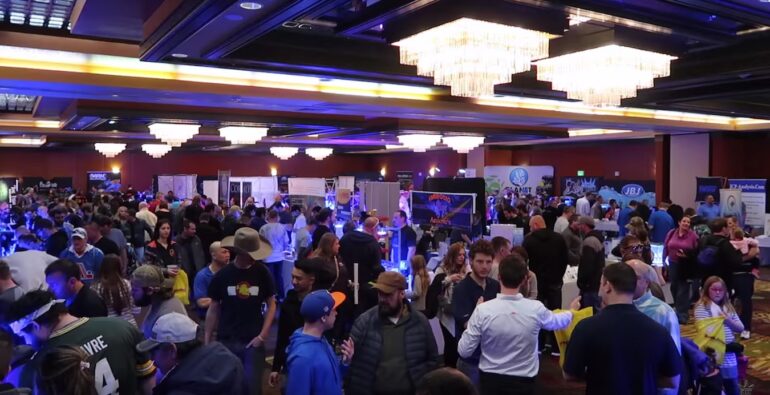After having been to and spoken at virtually every reef show that has occurred in North America over the past 30 years I may be a bit jaded in terms of what I expect at a show. When you couple that with how much fun and pleasant the airlines have made air travel, the frequency I have visited them, and how they all have started to look similar, I have to admit that I did not have my usual sense of excitement and anticipation as I got ready to head to Denver last week for the 10th Annual ReefStock.
While Jake promised me that it would be different from many of the shows I had visited in the past, I was a bit skeptical. So in order to make it a little more interesting for myself, I decided to do something I rarely do, so I came to Denver early so that I could visit some shops in the area as well as the Denver Aquarium, as I was told that Denver had a strong reefing community and that these would be worth visiting.
So as I am waiting to board flight home I am happy to report that not only did ReefStock exceed my expectations, but so too did my visit around Denver. The day before the show started with a behind the scenes tour of the Denver Aquarium. Rob, the head curator took us on a tour that all reef hobbyists dream of.
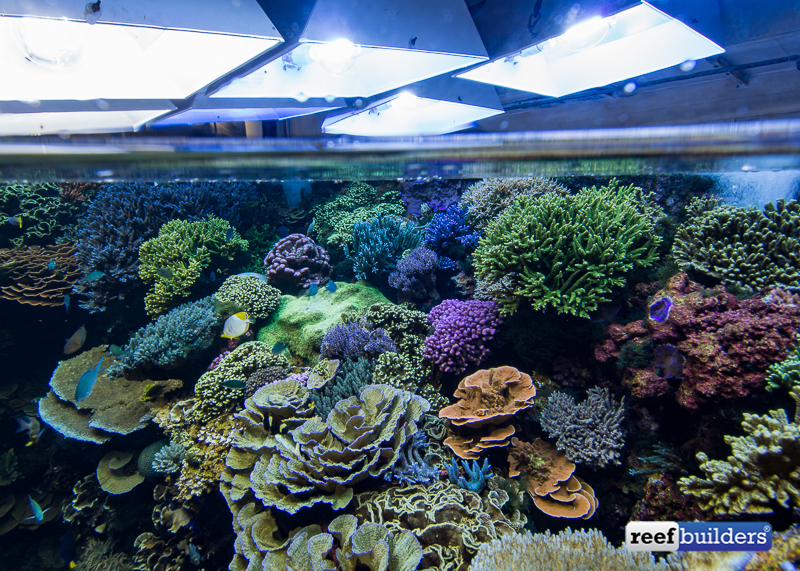 We not only saw all of the reef exhibits from behind the scenes, actually from above the scenes, which is definitely the best view, but we also got to see all of the technology and equipment that is being used on these splendid displays. The massive reef tank, that at least to me is the cornerstone of the aquarium has been up since 1999 and houses some of the oldest sps coral colonies I have seen in a public aquarium.
We not only saw all of the reef exhibits from behind the scenes, actually from above the scenes, which is definitely the best view, but we also got to see all of the technology and equipment that is being used on these splendid displays. The massive reef tank, that at least to me is the cornerstone of the aquarium has been up since 1999 and houses some of the oldest sps coral colonies I have seen in a public aquarium.
Interestingly since I saw this tank three years ago an interesting type of growth has occurred in that the massive sps colonies have seemingly moved up higher and higher in the tank so that now most of the main colorful colonies are in the top 2 feet of the 8 foot deep display tank. These colonies now not only overshadow much of the tank beneath them, but they have grown up to the surface even though 10 1000-watt metal halides cranking out a massive amount of heat rest almost directly above them.
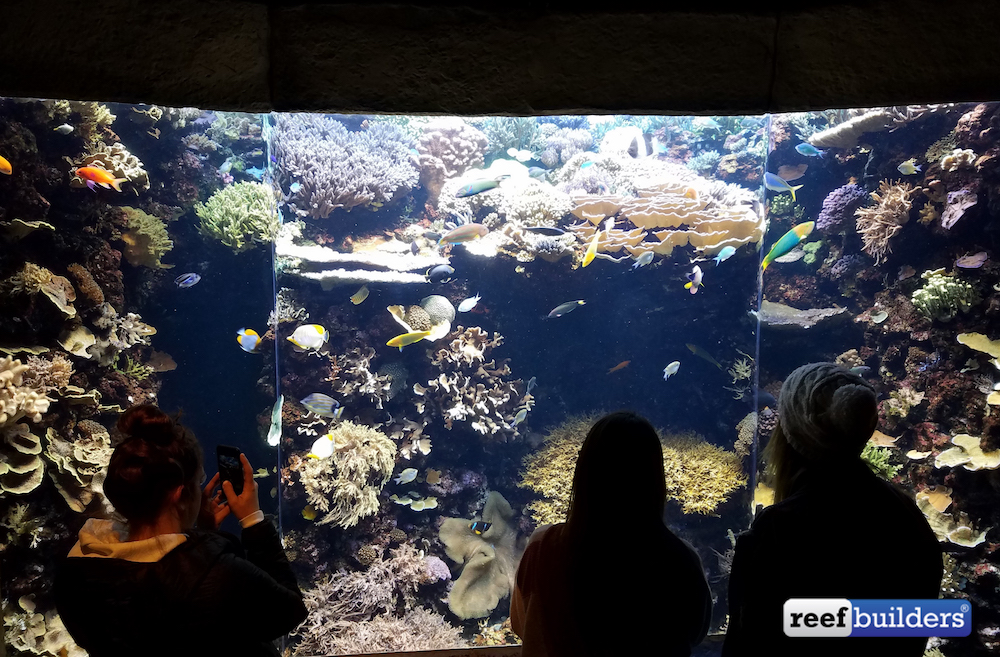 I would have thought that this close proximity to the lights and their heat would have kept the corals from growing so close, but this is not the case. This successful thriving tank is no doubt the result of not only the corals having have had time to acclimate to this intense heat and light, but also due to the excellent husbandry provided by Rob and Zach, the curator for this tank.
I would have thought that this close proximity to the lights and their heat would have kept the corals from growing so close, but this is not the case. This successful thriving tank is no doubt the result of not only the corals having have had time to acclimate to this intense heat and light, but also due to the excellent husbandry provided by Rob and Zach, the curator for this tank.
As an interesting footnote, Zach has also now been keeping crinoids for several months on a specially formulated diet that he came up with. I hope to replicate this diet with his help and will try again to keep these rare beauties long-term. If I am successful I will obviously report to you what it is and how it is working.
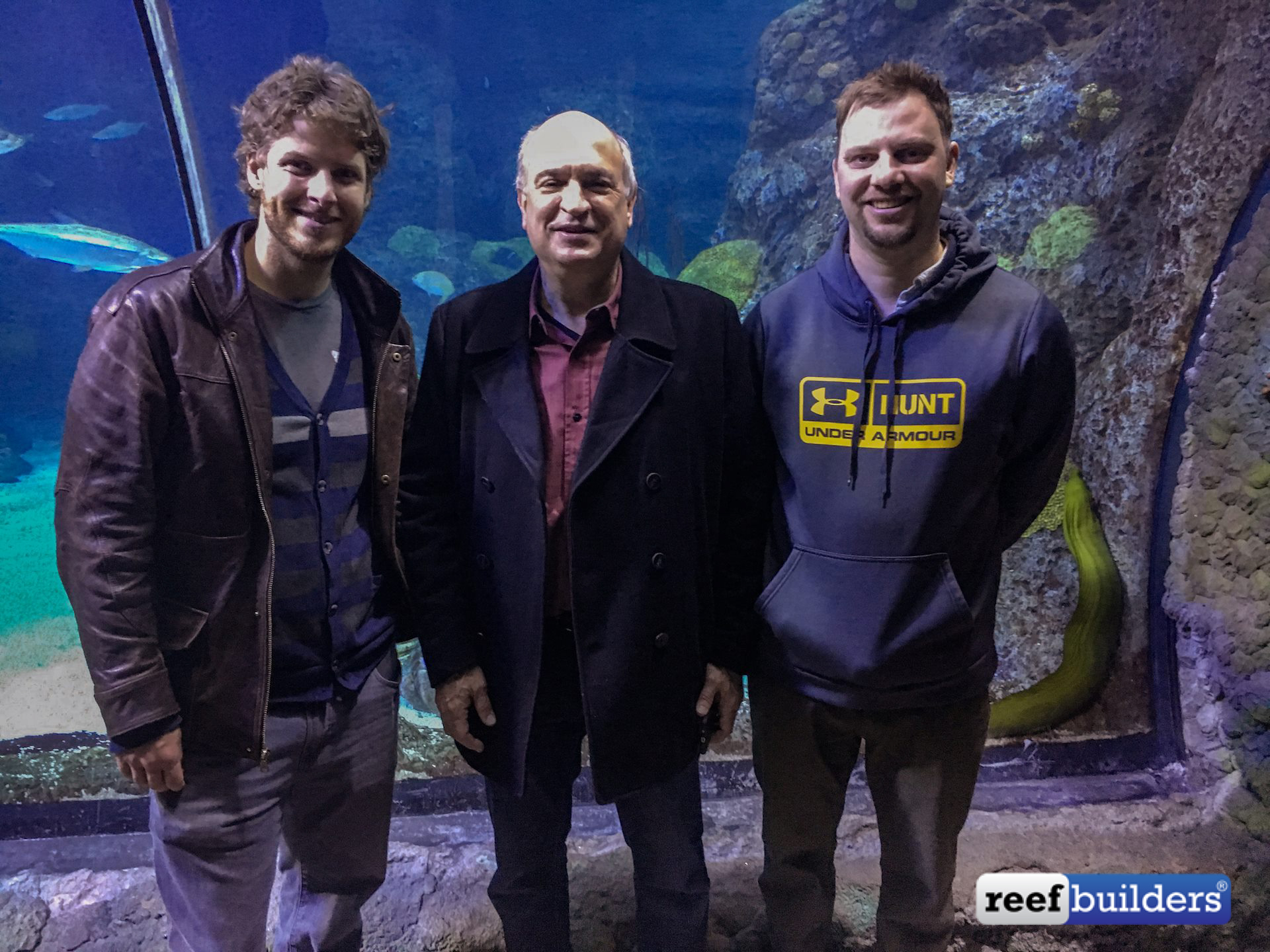
Local Fish Stores
Just as this public aquarium was worth the visit so too were the shops I visited. First we visited Stone Aquatics, which had one of the most remarkable collections of fish that I would love to have in my own tanks. They had one tank housing 4 Gem tangs as well as another housing a rare baby gem tang.
While this would have been enough to see, they also had another tank with a half dozen of the even rarer Personatus angels, all of whom seemed to play around the coral head housed in their tank. Steve, the owner then took this one step further and he set up a tank housing not only these two fish but also a Bandit angel.
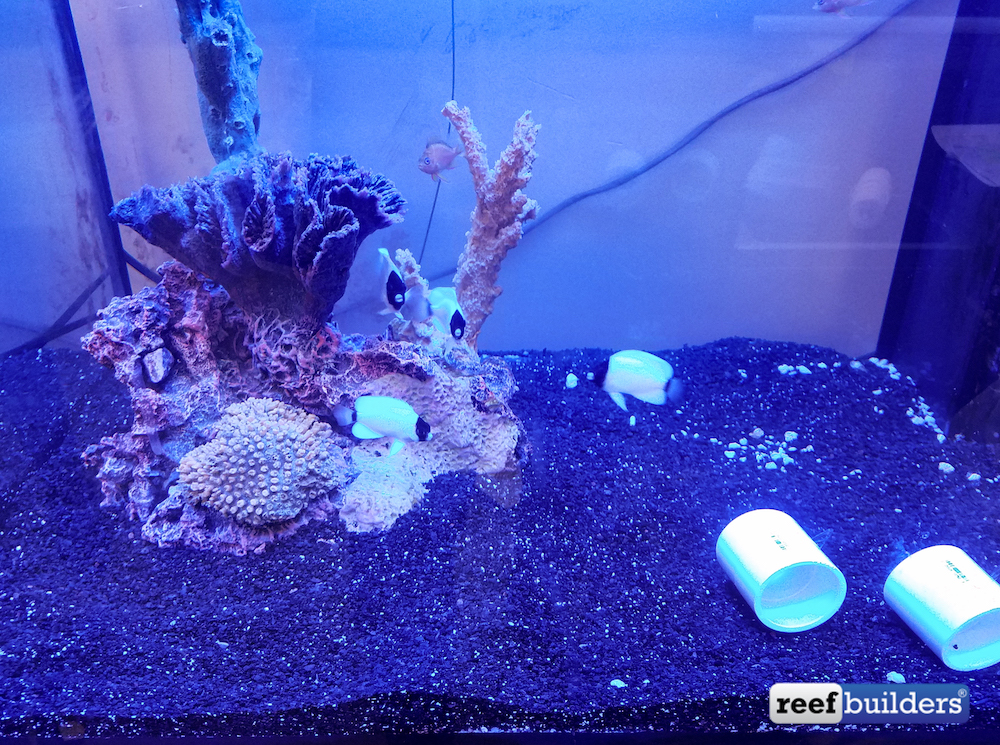 While I love rare fish, this display was over the top in terms of the rare fish that he was housing in a single tank. The fish were in fabulous shape and the water conditions were pristine. These conditions were achieved at least in part due to his maintaining the highest quality water conditions. His desire to keep optimal conditions in his tanks has led him to set up and bring in his own ICP device for water testing.
While I love rare fish, this display was over the top in terms of the rare fish that he was housing in a single tank. The fish were in fabulous shape and the water conditions were pristine. These conditions were achieved at least in part due to his maintaining the highest quality water conditions. His desire to keep optimal conditions in his tanks has led him to set up and bring in his own ICP device for water testing.
Like the device housed in Germany, this methodology for testing allows him to measure the conditions to a level that for most of us has been unobtainable until recently. Having a machine in the states should allow for faster results, which has been a slight drawback with the other system.
Not to be outdone, the health and selection of corals at Aquatic Art made me wish I lived closer to Denver. As I discussed in a previous article on the Demise of the LFS, one of the problems I saw was that many of these stores did not provide inspiration to their customers as to what was possible in their tanks. In this regard, Chris the owner, has set up one of the more impressive display tanks I have seen in a shop in a long time.
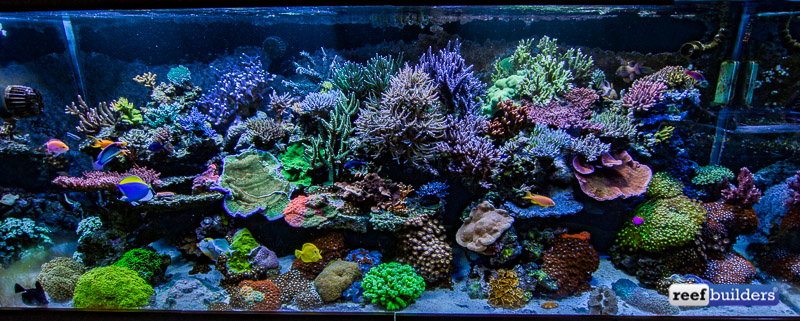
Several of the colonies are so massive that it looks like they will soon fall in upon themselves. More impressively however, Chris makes it possible for any of his customers to have these corals as frags for all of these corals and more are being grown out and propagated in his grow out systems including his famed Herlock Gonipora, named after the original grower, which has been growing in the tanks in Denver for over 20 years and in his tank for at least 10, and which he propagates regularly.
ReefStock
After seeing all of this I was happy that the first part of my plan to make this show different and better had been successful. But going in I was still a bit skeptical of how the show itself would be unique. While being there during set-up I could see that it would be at least a little different from the start, as unlike most shows, Jake and Ryan had managed to get stores, manufacturers, propagators and even a public aquarist to all get together under one roof, which unfortunately is becoming rarer at large shows. And amazingly enough, as I watched all of these different interests interact everyone seemed to get along, joke and most importantly learn from one another, which also was a bit unique.
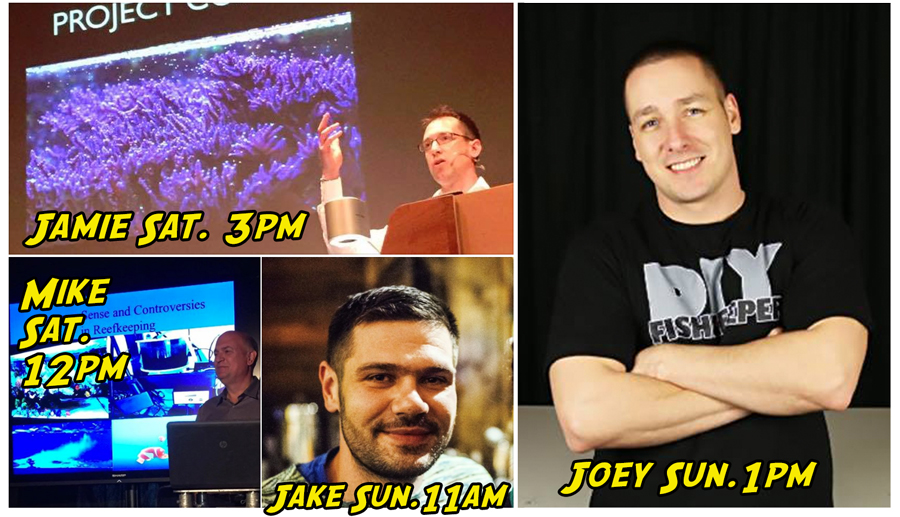 From my own personal perspective, I was hoping to see if there was anything new equipment wise, which I doubted as most new products seem to come out at MACNA. And was also hoping to see if there were any unique corals or fish, and no I got neither the Personatus Angels nor Gem Tangs for my own tanks, that was interesting enough to get for my tanks. Lastly, I knew Jake had enlisted several interesting speakers with great topics who I looking forward to learning from. Lastly these meetings also allow one the opportunity to not only catch up with new friends, but also to hang out with other hobbyists and learn what is going on in other places and what I am missing.
From my own personal perspective, I was hoping to see if there was anything new equipment wise, which I doubted as most new products seem to come out at MACNA. And was also hoping to see if there were any unique corals or fish, and no I got neither the Personatus Angels nor Gem Tangs for my own tanks, that was interesting enough to get for my tanks. Lastly, I knew Jake had enlisted several interesting speakers with great topics who I looking forward to learning from. Lastly these meetings also allow one the opportunity to not only catch up with new friends, but also to hang out with other hobbyists and learn what is going on in other places and what I am missing.
New Aquarium Products
I know after reading the above you are thinking that this is as exciting as watching pictures from someone’s vacation, you want to know where’s the meat? I.e. why should I care about what happened at this show? And what happened there that could possibly mean anything to me.
Well boys and girls I’m happy to say that there was actually a lot of things that may or will have implications for many of us, and I’m not just talking about new amazingly colored corals being released by World Wide Corals or Gonzo. To start with, how about a LED light that is encased in glass and after being on all day at the show it was as cool as when it was first turned on.
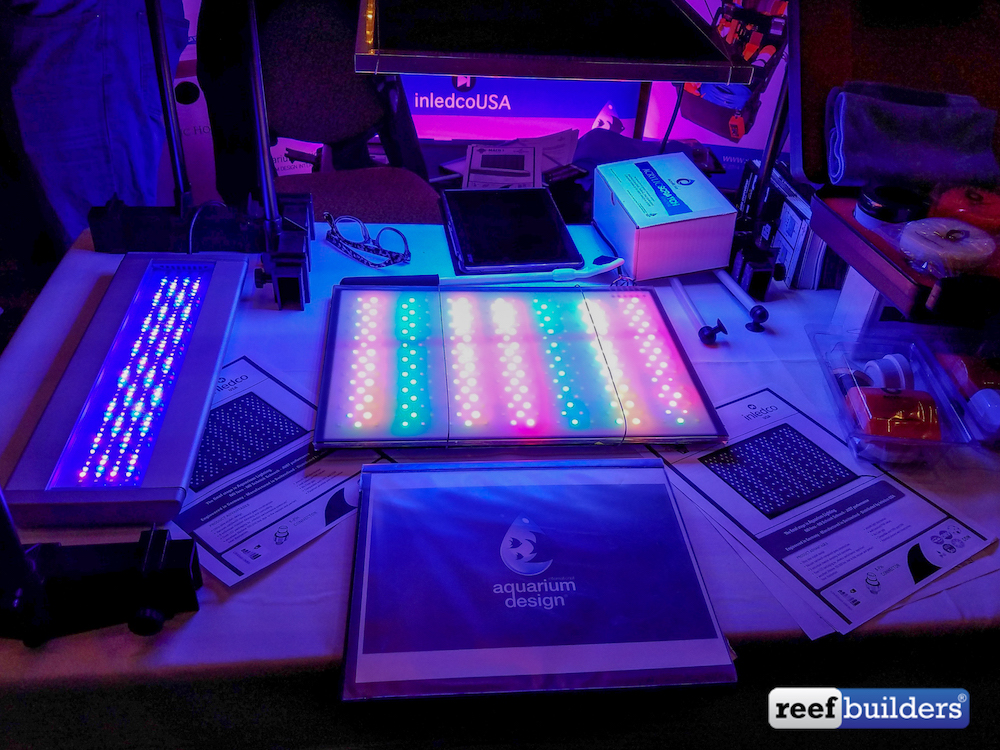 Well that is the light that inledcoUSA/Aquarium Design showed at the show. While most LEDs produce some heat, albeit usually significantly less that were generated by halides, these lights were a big jump forward in producing significantly less heat. The light itself was also very thin and it’s unique design was impressive to look at. My only complaint was that I would have liked to have seen how the light looked over a tank and also how the corals responded to the colors it produced over time. While the fixture showed an impressive array of colors in their demo model, until it is over an actual tank and with corals and fish, it is tough to know how the colors will look, but I am hopeful that it can be arrayed to match the colors corals respond to.
Well that is the light that inledcoUSA/Aquarium Design showed at the show. While most LEDs produce some heat, albeit usually significantly less that were generated by halides, these lights were a big jump forward in producing significantly less heat. The light itself was also very thin and it’s unique design was impressive to look at. My only complaint was that I would have liked to have seen how the light looked over a tank and also how the corals responded to the colors it produced over time. While the fixture showed an impressive array of colors in their demo model, until it is over an actual tank and with corals and fish, it is tough to know how the colors will look, but I am hopeful that it can be arrayed to match the colors corals respond to.
In addition to this innovation, another impressive vendor who displayed new technology for the first time was Matt of 3D Printed Reefing Solutions. Matt brought a wide array of material that are useful in our reef tanks that were 3D printed. Some of these items included frag holders and plugs, probe and sensor holders as well as various kits for helping us keep better organized. Matt was also able to customize things when a specific request is made.
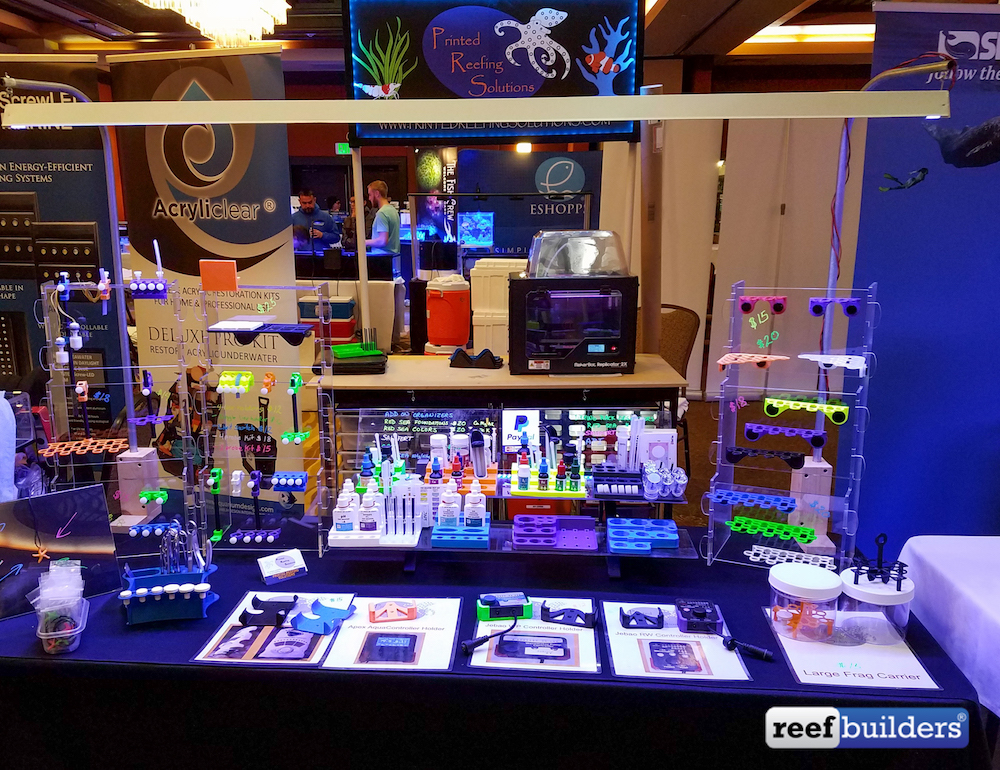 For me I needed an extra long way to hold the water level sensor in one of my tanks. So instead of the standard 6 or 12” ones Matt custom made me a 14” one, which when I got home worked perfectly on my tank. Matt also makes these items in a wide variety of colors so you can be even better organized and color coordinated. While he doesn’t yet have the variety of items that Dirk always brings to these shows, he did show enough innovation that I think he too will be a steady presence at the shows. And his ability to customize things will make him a welcome sight for many of us mad tinkerers.
For me I needed an extra long way to hold the water level sensor in one of my tanks. So instead of the standard 6 or 12” ones Matt custom made me a 14” one, which when I got home worked perfectly on my tank. Matt also makes these items in a wide variety of colors so you can be even better organized and color coordinated. While he doesn’t yet have the variety of items that Dirk always brings to these shows, he did show enough innovation that I think he too will be a steady presence at the shows. And his ability to customize things will make him a welcome sight for many of us mad tinkerers.
The next innovation that I saw for the first time there was shown by Ricardo of Coralvue, who showed the constant alkalinity sensor. For me, someone who tests alkalinity daily, I thought that it was about time that a device like this was on the market. As Ricardo pointed out this device not only monitors alkalinity but it also helps to make small adjustments so that the alkalinity in a tank remains stable throughout the day and night.
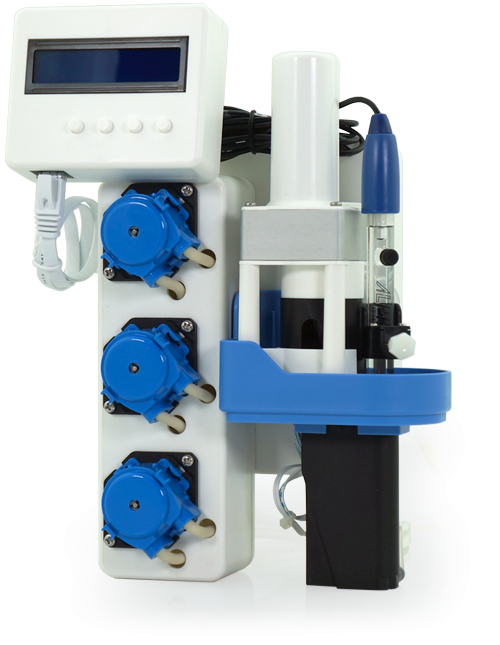
While I have occasionally measured the alkalinity in my tank in the middle of the night and seen a difference from the daily readings, to me it would be nice to see these measurements on a more consistent basis and chart the trends and changes that occur over time, which this device would provide. My only concern about this device is the price, which to me is a significant investment for both the machine and to run it. I realize that development costs need to be recouped and that all new technology is expensive, but I hope that as with most technology the price comes down over time for what I consider a potentially valuable piece of equipment.
While measuring alkalinity on a constant basis is a new technology, Steve Visser of the above mentioned Stone Aquatics has taken the step of making technology that has been available for a while and streamlining it by bringing this technology to the states. What I am talking about is that Steve has bought an ICP machine like that used by Triton and is making ICP testing available here with the goal of making the test results available quicker and over time less expensive, as a result of not having to ship everything to Europe. As a big advocate of ICP testing and the wide range of measurements it provides, I am anxious to test this American version. I will be sending in a test soon and am anxious to see if this version of ICP tests for the same number of elements as does the Triton system.
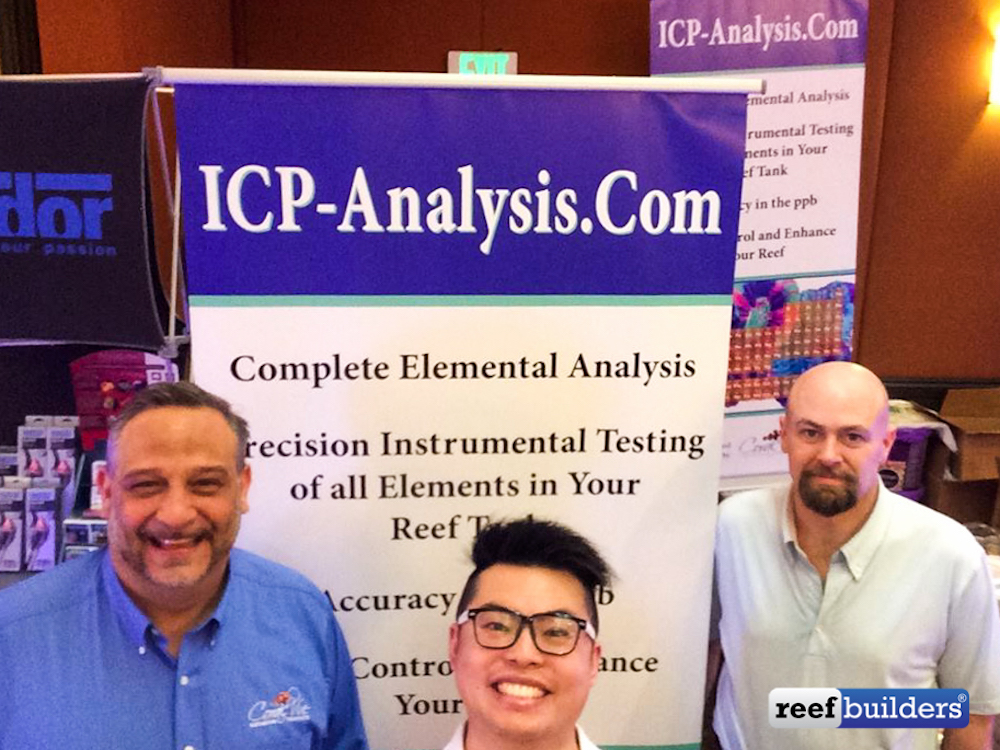
While the two above additions to testing were to me and hopefully you quite interesting, they pale in comparison to the potential that MindStream has for our tanks. Yes I know we have been waiting for this innovation for the past couple of years and some of us have lost hope that this will come out any time soon. However, after spending the better part of the day with Brian and Ryan and discussing this as well as what they hope the device will do I am more hopeful than ever that it will be out sooner rather than later.
After talking with them, I am actually convinced that the wait will have been worth it as the goal has always been to only release the MindStream when it was not only reliable, but also only if it was as least as precise as the test kits we are currently using. Needless to say, getting a device the size of an oversized hockey puck to do all of this has not been easy to accomplish. But they are confident that when it does come it out will do this and more.
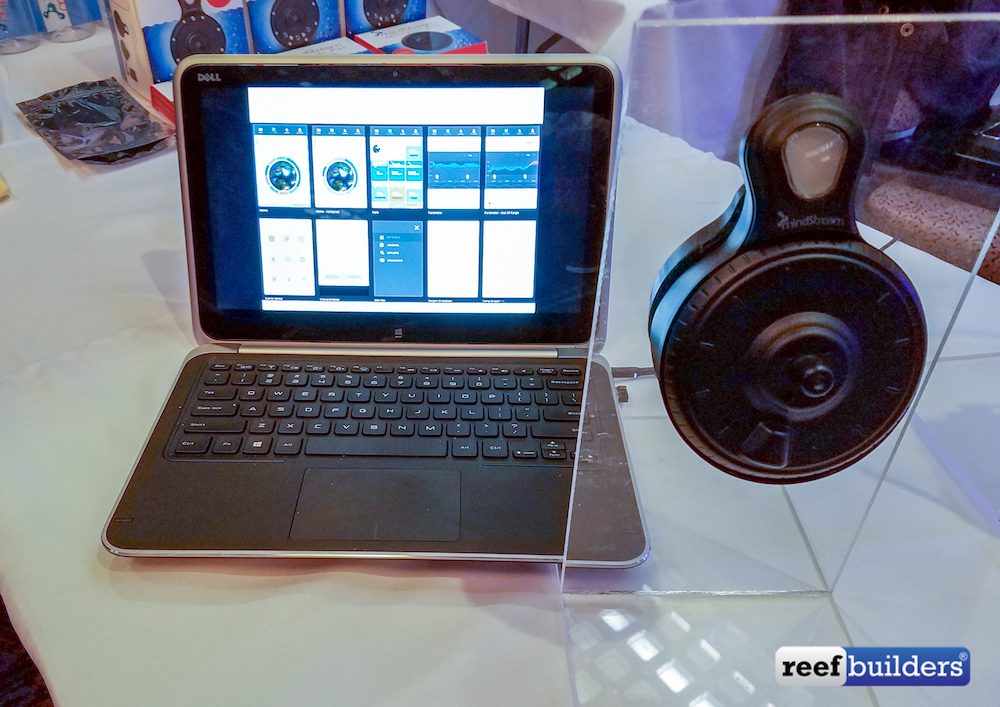
The more I’m talking about is the result of their consulting with a number of well-known hobbyists to help in the development of the MindStream device and have it measure most of the things we test for regularly and provide these measurements on an almost constant basis. In addition to the alkalinity/carbonate measuring that I mentioned above this device with also measure pH, temperature, calcium, salinity/tds, ammonia, potassium and oxygen. Oxygen, for me at least, is the one element in our tanks that I would like to know much more about, as for the most part very few of us measure oxygen levels on any kind of regular basis.
These are just the elements and compounds that will be measured initially and down the road as demand increases and the device matures they hope to add several significant other measurements as well, which I told them we hobbyists are interested in. Fortunately, they seemed to actually be interested in making this device be as hobby friendly as possible, so I hope they will continue to listen to the hobbyists that are trying to help them. To me, it is not only that these measurements will be made constantly, but also that it will be possible to view these measurements over time. In this regard, it will be easy to see what effect things like, doing a water change, feeding or cleaning a skimmer or glass or stirring up the substrate have on a tank and which values change and by how much as a result of these things occurring.
In addition to these highly innovative products I also got to talk with a few other vendors about things on the horizon. In this regard Jeff Maccare of Abyzz let me know that there are few new innovative things coming out from them as did Jay and Pat of Ecotech, always one of the most innovative companies in the hobby. Sadly, I can’t discuss these as I took a vow of silence, but I think most of us will be happy when these new products hit the market. As always new and innovative products are always welcomed with open arms by the hobby, but all of us will be forced to wait a while longer.
Speakers
If this was all there all there was at ReefStock I would have considered the show to be a success, but fortunately, the speakers added even more to what I took home from the show, yes I did bring home a few more frags. Jake Adams, our host, in his first ReefStock presentation ever gave a great presentation on the many corals he came across on his recent dive trip to Indonesia, as well as the conditions under which they grow. This was far more informative than the usual coral talks I have seen.
In addition, Jake showed some rare shots of corals that were not usually known for coming from Indonesia like Acropora spathulata and A. horrida, which most think primarily come from Australia. It will be interesting to see if these corals are hardier in our tanks than their Australian counterparts as a result of their coming from areas that are not quite as pristine and perfect as the Australian reefs.
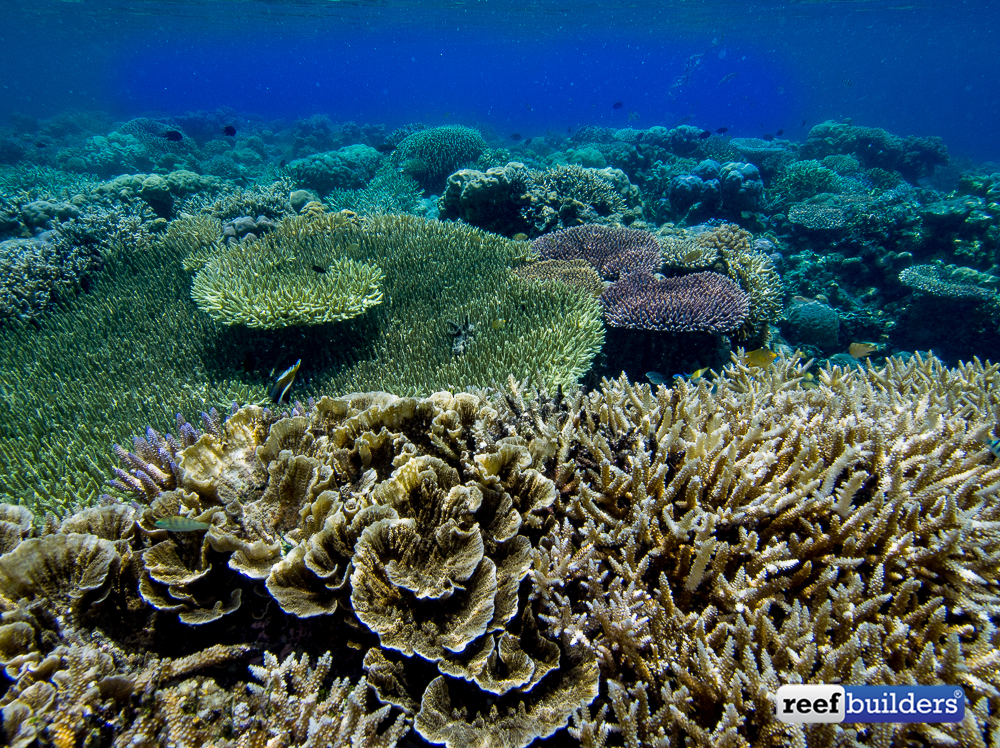
In addition, he showed enough natural coral formations that it provided plenty of new ideas for how to aquascape a tank to make it look more natural. Lastly, his talk provided validation that we have not run out of beautiful and new corals that can be added to our tanks. And just as importantly he also pointed out that many of these corals may be being maricultured, so hopefully some of these gems will be widely available in the near future.
While Jake’s talk focused on what is going on in the wild and how great diving in Indonesia is, the talk and the amount of information provided by Jamie Craggs in his talk showed how far and how fast the hobby is moving. For those of you not familiar with Jamie, he was one of the first pioneers in a public aquarium, The Horniman Museum in London, to induce Acropora to spawn in captivity. As a result of the work he is doing, a multitude of things with potential implications for the hobby and beyond were talked about.
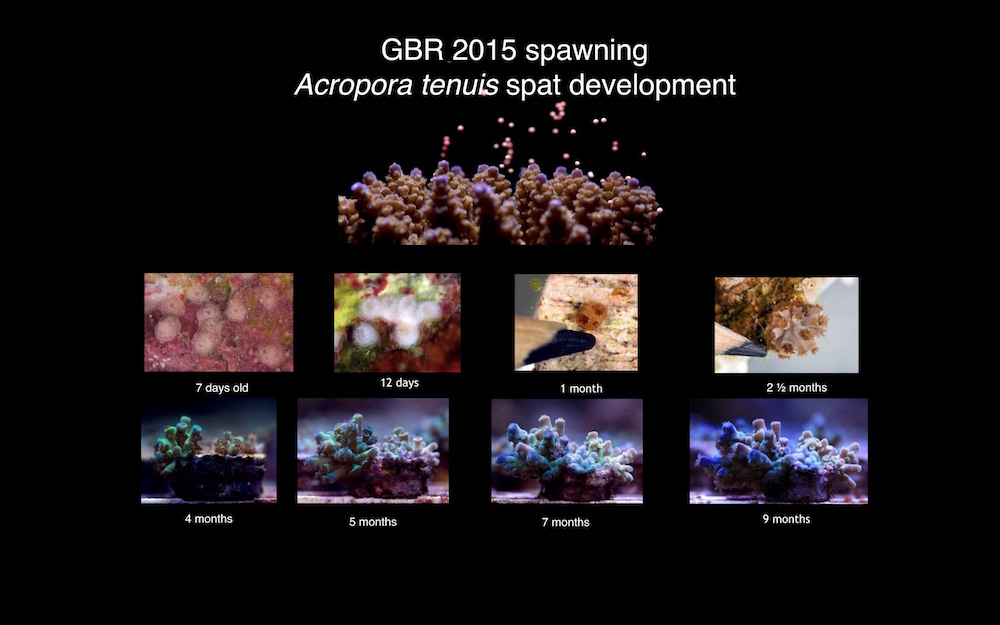 When I met with him in September his lab was happy just to get the corals he had in captivity to spawn once a year on their annual spawning night. Now, just 5 months later he has mastered the techniques and conditions necessary and has now gotten these corals to spawn 7 times. Just as importantly they have mastered what is necessary to get the spawn to settle out and grow into little colonies of their own.
When I met with him in September his lab was happy just to get the corals he had in captivity to spawn once a year on their annual spawning night. Now, just 5 months later he has mastered the techniques and conditions necessary and has now gotten these corals to spawn 7 times. Just as importantly they have mastered what is necessary to get the spawn to settle out and grow into little colonies of their own.
By adjusting and manipulating factors such as the lunar cycle, water temperature, and providing improved coral nutrition, I am still waiting for him to publish his paper on the subject, along with some other factors he has learned more in a short time about coral spawning than has been learned in decades observing spawning activity in the wild.
The implications of this are seemingly limitless. For the hobby in addition to eventually getting a better understanding of coral nutrition, which to date we are clearly lacking, he is also doing things like hybridizing some of this spawn. He has gotten so good at this he has even hybridized Acropora that are seemingly as dissimilar as possible.
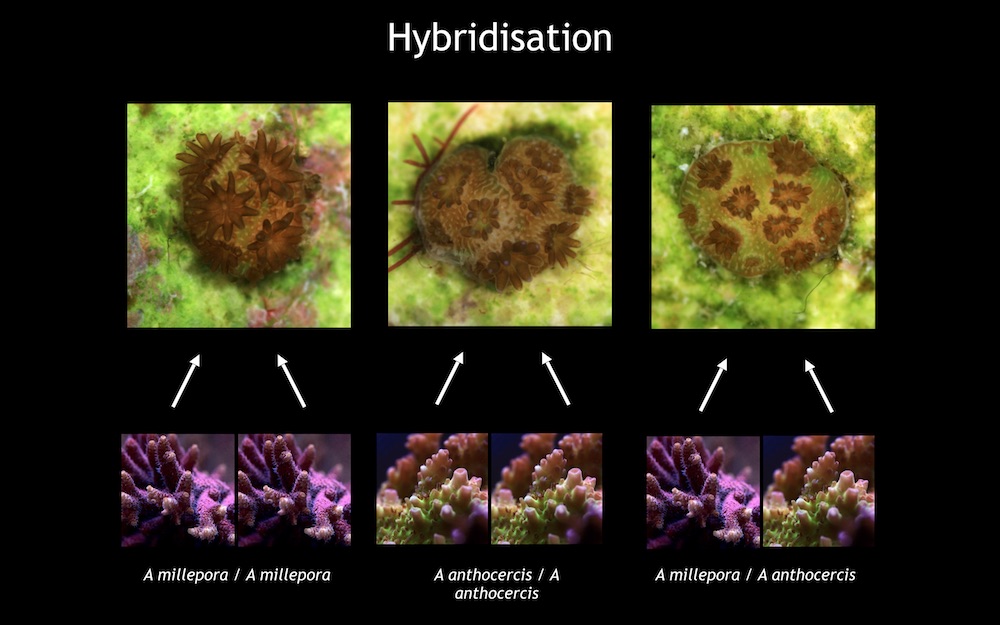 In his talk, he described that they had crossed A. millepora and A. lokani. It is still too early to see what this hybrid looks like, but it demonstrated that the possibilities are limitless. And this is just the start, he has also gotten different colored spawn to fuse, as shown in the picture of the seemingly half and half coral, which was as beautiful looking as any coral I have seen. Also instead of getting a few dozen baby colonies from the frags of a highly desired colony Jamie has shown that it might be possible to get thousands.
In his talk, he described that they had crossed A. millepora and A. lokani. It is still too early to see what this hybrid looks like, but it demonstrated that the possibilities are limitless. And this is just the start, he has also gotten different colored spawn to fuse, as shown in the picture of the seemingly half and half coral, which was as beautiful looking as any coral I have seen. Also instead of getting a few dozen baby colonies from the frags of a highly desired colony Jamie has shown that it might be possible to get thousands.
And as a result of his lighting and nutritional work potentially over time he may learn how to speed up growth so more of the desirable corals can come to market faster. From his humble description of what he is doing and from talking to him he is convinced that it will not be long until many home hobbyists will also be having corals spawn in their tanks, and that in some instances it may already be happening. Once Jamie publishes his techniques and methodologies he is convinced that it will become a common occurrence.
While all of this is exciting from a hobbyists point of view, it pales in comparison to what his work may mean for the threatened reefs of the world. One such thing that he pointed out is that when a bleaching event occurs a large number of corals bleach out and die, but not all of them. But some of these that survive may be so far apart from another survivor that it would be difficult for them to successfully spawn. And as a result these heat hardy may be lost.
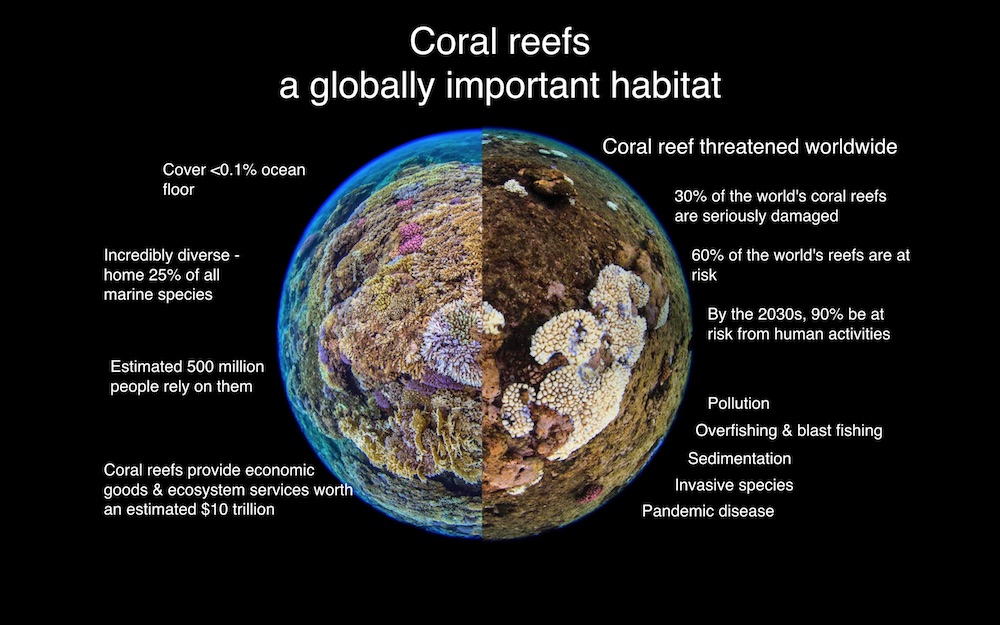
However, because of what he can do in the lab, he can take these two individuals and potentially produce offspring that are much more immune to bleaching. Then over time these corals could potentially be reintroduced to reefs where bleaching events had occurred. Similarly, he can take corals from an area where the corals are accustomed to a higher temperate and cross them with corals from a cooler but geographically different region and introduce this heat tolerance into them.
So as a result of his work, the potential for restocking damaged reefs all over the world has never been greater. Because he has been so successful he is even starting a new endeavor in Florida, which may eventually help restock the endangered A. palmata and A. cervicornis corals to the reefs of the Caribbean. What is even more amazing is that he is doing all of this work while also working to finish up his Ph.D.
Needless to say, I feel lazy every time I go to sleep now knowing what he is doing and the impact his work will have on the reefs of the world and directly and indirectly on our hobby. If you would like to follow what he is doing it can be found online at Project Coral.
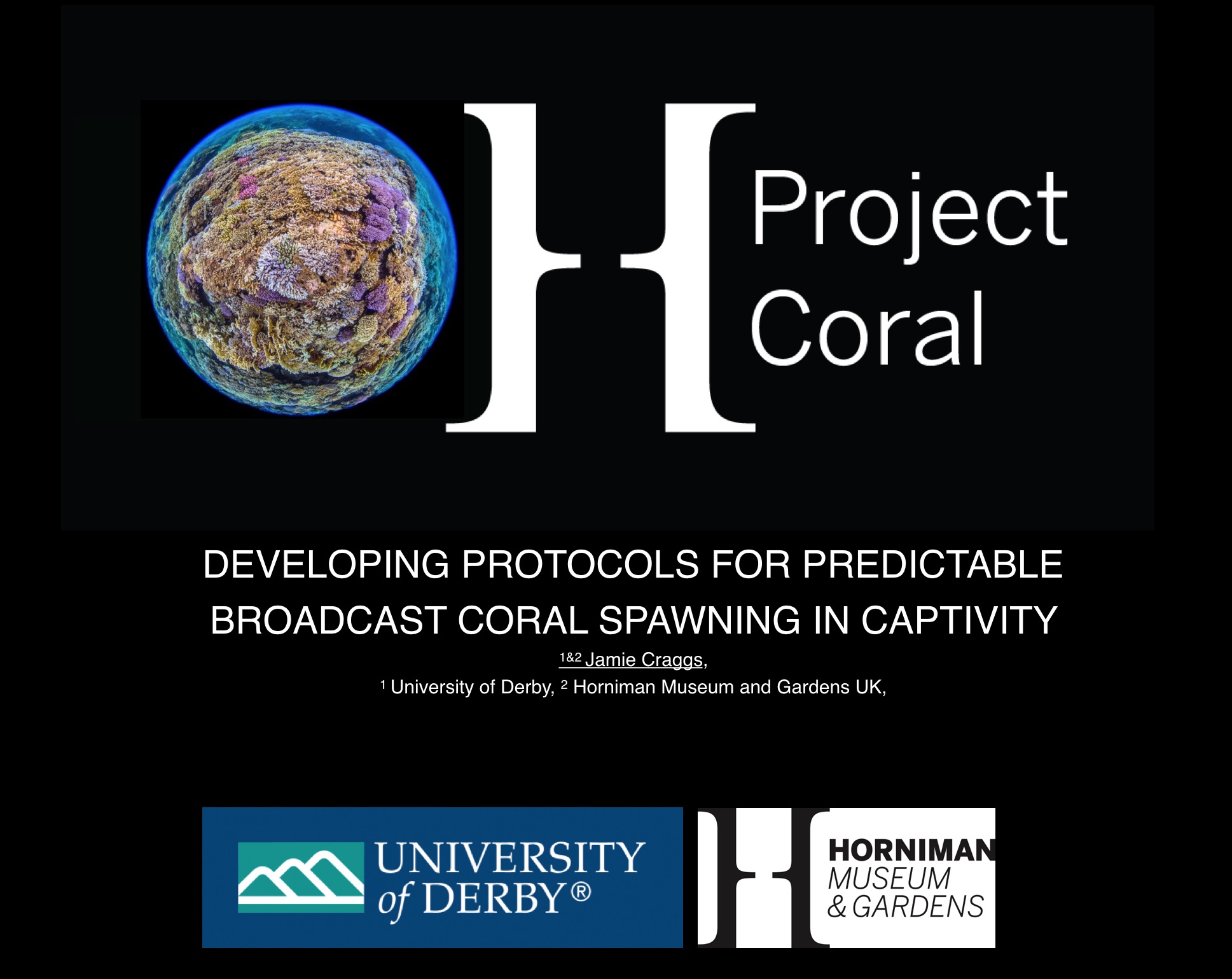
As I said at the beginning of this article, I was hoping that this show would not be disappointing, and it wasn’t. It was actually like shows I have been to in the past, in that Jake and Ryan had done something that is now unique by pulling in individuals from every part of the hobby. And while most new things in the hobby are introduced at MACNA there was more than enough new equipment here to make it interesting.
But it was the talks, that at least to me made it a really worthwhile conference to attend as I love learning new things that will hopefully make me more successful and give me something to look forward to. And it was also good from the standpoint that I even found corals I wanted to have and luckily they all made it home safely, which made it even more worthwhile show for a coral junkie like me. I hope that some of the other shows that are out there will learn from what happened here and try to bring in all walks of the hobby.


